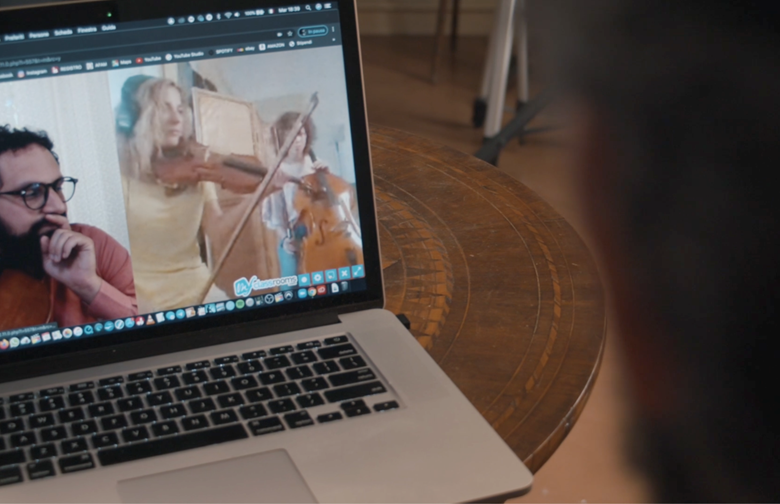Make music online with new video software for teachers and pupils
Owen Mortimer
Thursday, November 5, 2020
Owen Mortimer explores mfClassrooms, a new online platform that’s tailor-made for music teachers and students

Roberto Prosseda
If our ancestors could travel through time to experience life in 2020, they might think they had arrived at the future predicted by science fiction writers – one where communication via screens has replaced real human interaction. That’s certainly how E.M. Forster imagined the future in his 1909 short story The Machine Stops, in which all of humanity lives underground and screens are the only method left to communicate with one another.
But Forster’s is a dystopian vision, and while the pandemic may at times seem apocalyptic, there are already positive that people are finding ways of working creatively towards a better future. In the field of music education, teachers and students have turned en masse to messaging and videotelephony services such as Zoom, Teams and Skype. This has allowed learning to continue during the lockdown, albeit with some limitations, but wouldn’t it be wonderful if someone could come up with a system that’s tailor-made for musicians?
Enter mfClassrooms, the brainchild of Italian pianist and technophile Roberto Prosseda. Working with a network of like-minded partners, he began developing this project in early 2019 but brought forward its release when COVID-19 struck. The result is an innovative online platform for music teachers and students that offers much higher sound quality than existing software – plus a whole range of other useful features.
Prior to hearing about mfClassrooms, I had tried playing a duet via Zoom with one of my friends. Total disaster! Apart from problems synchronising with one another, we found each of us kept cutting out. Zoom just can’t handle so much data, so it seems.
mfClassrooms has resolved this problem by introducing independent audio channels for each user. As Prosseda explains: ‘Zoom usually gives priority to the “main” user (the one who is playing in that moment) and if a second user tries to speak over the sound (or to play together) it takes a moment before the other user can hear them.’ The result is not 100 per cent synchronised, but it is good enough for two people to play a slow duet, or for one pianist to play chords while the other improvises.
You might think this would require a superfast fibre broadband connection to carry so much data, but the beauty of mfClassrooms is its ability to work at speeds as slow as 1MB per second. ‘mfClassrooms is a webRTC software,’ explains Prosseda, ‘which means it is able to detect fluctuations in internet speed and adapt the video quality accordingly: if there is a decrease in internet speed, the video quality is decreased, thereby preserving the audio quality’.
Aside from the sheer quality of its audio and visual feeds, mfClassrooms also includes an online scheduling function for teachers and students to coordinate lessons. A record function allows lessons to be captured in full for review later. It’s even possible to invite other people to listen in: up to 1,500 people can ‘attend’ the same lesson, masterclasses or performance.
In terms of cost, the investment required to access mfClassrooms is surprisingly modest, though registrations are currently only open to institutions. Small schools with up to five teachers pay an initial fee of €150 while conservatoires are charged €499. Thereafter, rates can be as low as €0.89 per hour.
It doesn’t even cost much to buy the other hardware needed to run mfClassrooms. All that’s needed is a laptop and decent microphone. Prosseda himself uses an AKG Lyra microphone which connects to his laptop via the USB port. The identical model can currently be bought online for less than £150 but as I heard for myself, the resulting sound quality is more than adequate. Compared with Zoom, the dynamic range and depth of tone colour is pretty astonishing – and is only likely to get better as the technology improves.
Anyone wanting to sample mfClassrooms for themselves can find a series of sample videos on YouTube. If you’re not already using it, I can guarantee you’ll want a subscription soon. As Prosseda says: ‘It is a new bridge for musicians.’
mfclassrooms.com


